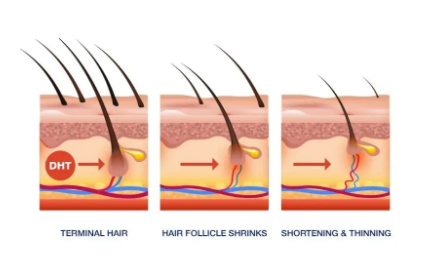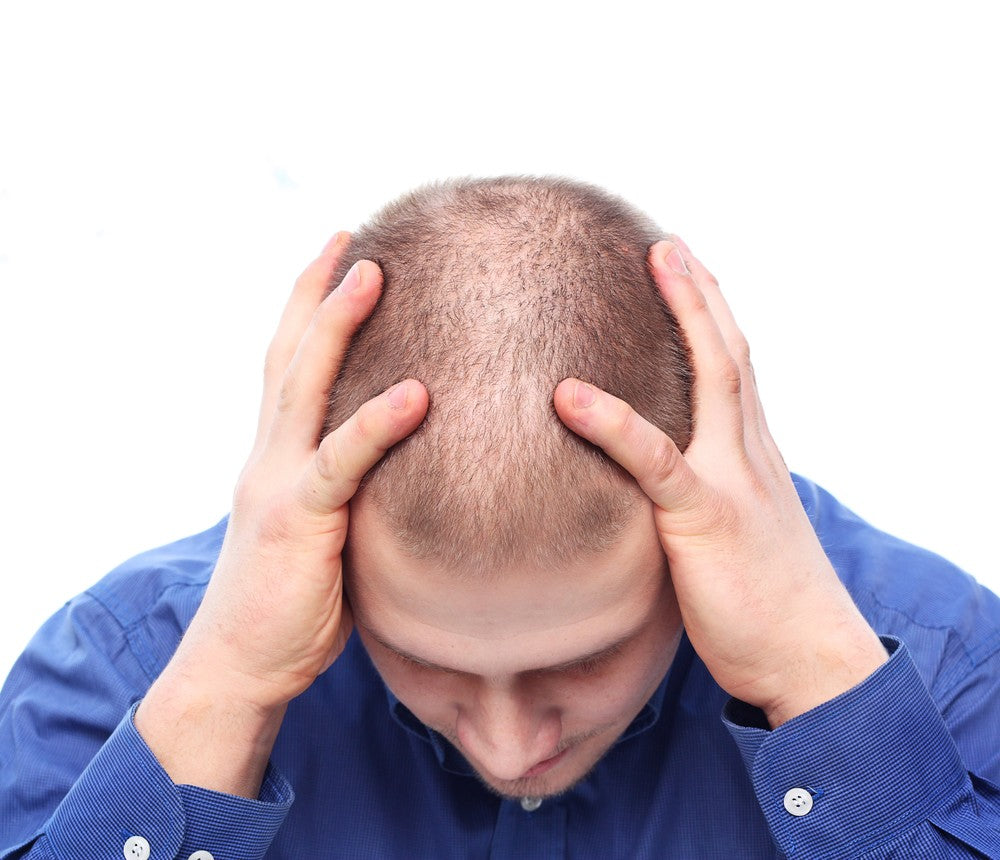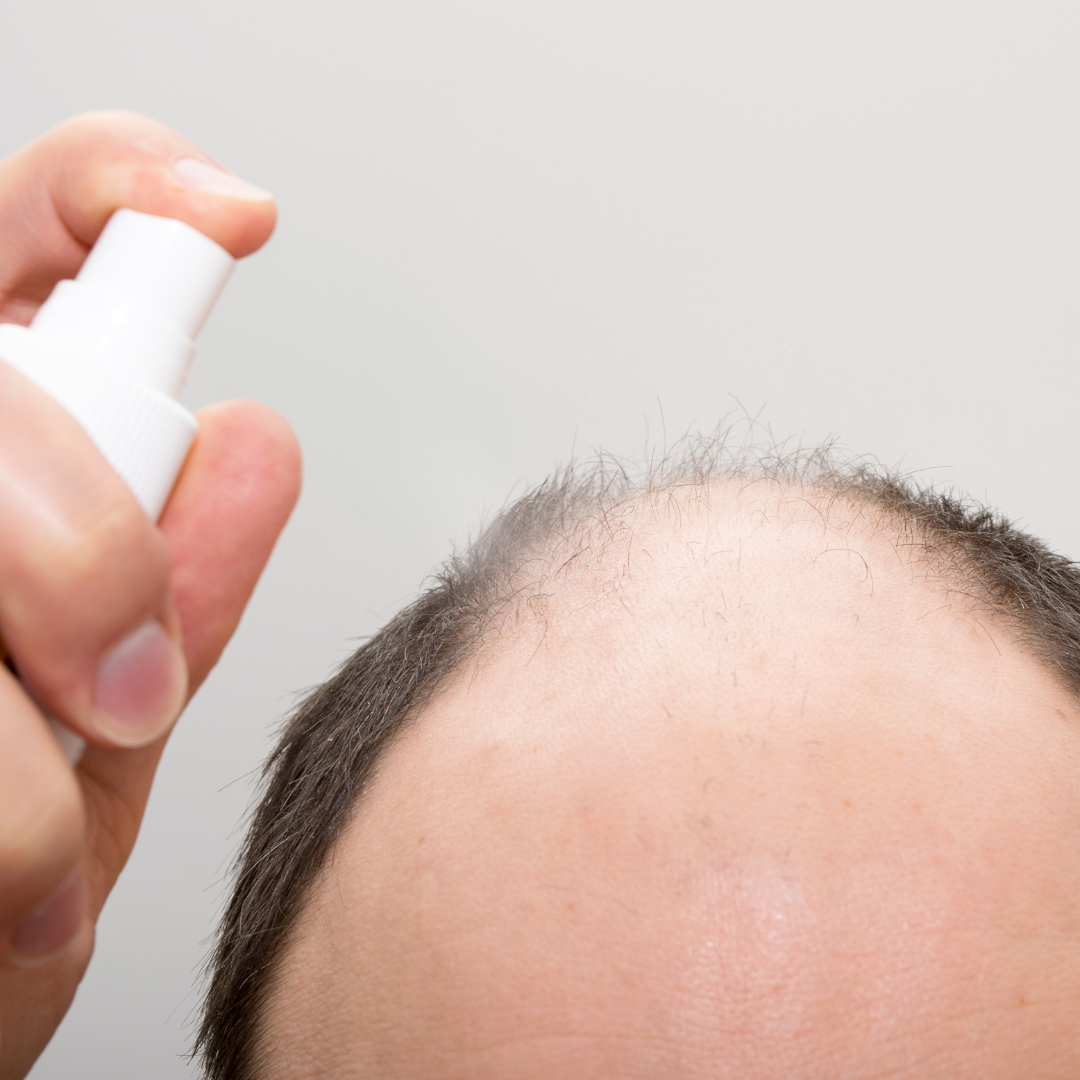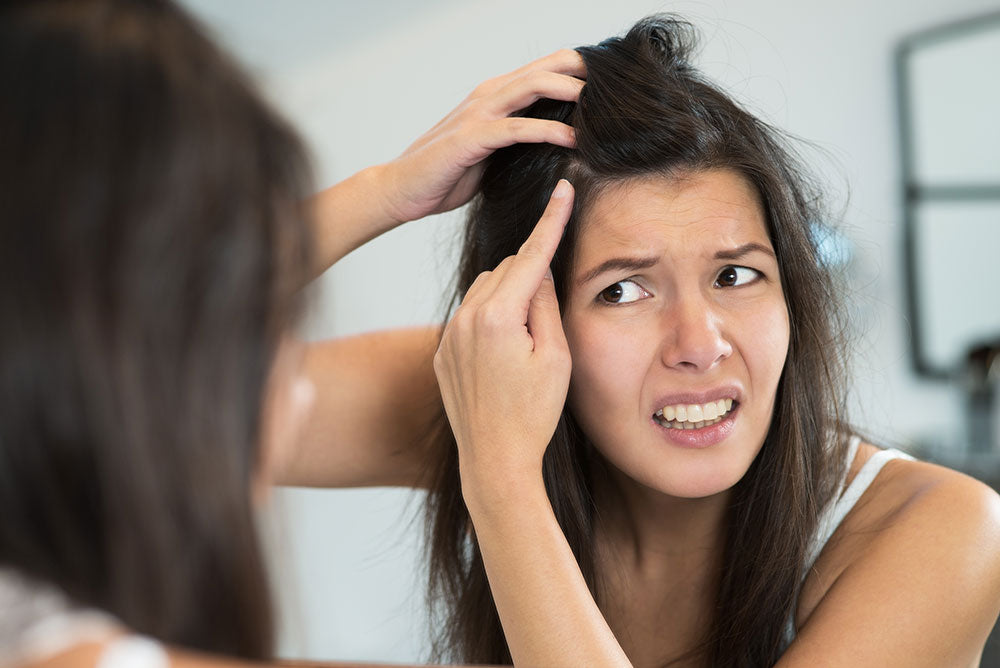Why Is My Hair Falling Out?
Experiencing hair loss and hair thinning can be frustrating and demoralizing, but you have solutions to prevent most of the causes.
Often, hair loss is is attributed to genetic predisposition. We assume that we have a natural tendency toward hair loss, and that it is unavoidable without potentially dangerous drug or surgical intervention. These solutions, however, are often costly and damaging to the body. The good news is that hair loss has many causes that can be remedied naturally.
1. Mental and physical stress.
Stress puts a strain on the entire body. Mental stress has been linked to several types of hair loss, including telogen effluvium and alopecia areata. Find what works for you when it comes to reducing stress. Get enough sleep, exercise, keep a journal, or consider seeking professional help from a therapist, especially if you are experiencing high levels of stress. Physical stress may be from injury, but it may also come from untreated health conditions. Health issues such as thyroid disease, lupus, and ringworm of the scalp can cause hair loss, and treating these conditions if they are present is the first step in treating the resulting hair loss.
2. Poor nutrition.
Poor nutrition affects the entire body and is often overlooked as a cause of hair loss and hair thinning. The state of our hair often reflects the state of our body. When the body is not receiving the vitamins and minerals it requires to function, our hair suffers. Iron deficiency is a leading cause of hair loss in women, and deficiencies in Zinc and B12 have also been linked to hair loss. Eating the right foods as part of a healthy and balanced diet is vital in achieving optimum health.
3. Hair styling
Tight braids and hair styles can lead to hair loss around the hairline, a condition known as traction alopecia. Braiding hair tightly or pulling hair up into a tight ponytail strains the delicate hair around the face and forehead. Instead, braid hair loosely and use ponytail holders that are large enough to accommodate the thickness of the hair. Never use rubber bands, which become tangled in the hair and cause breakage. There are also ways to minimize hair breakage and loss by eliminating the common mistakes we make in the way we wash, brush, and dry our hair
Dry Hair
When your hair is starved and devoid of the correct form of moisture it becomes dry lack lustre and brittle. A rapidly moving cycle develops as the poor condition of your hair doesn't get or retain enough moisture. When your hair is dry, the outer layer breaks down, causing it to appear lifeless dull and unhealthy This reduces shine and usually make's it appear frizzy. Then it starts to die and drop off Julian Jay products bring your hair back to life, adding sheen and lustre, plus more bounce and shine all vital signs of healthy hair.
Discolouration
Hair can become discoloured early on at any age primarily due to the wrong diet which affects hair colour chemistry, but also hard water when washing, chlorine in swimming pools, chemical dyeing especially ammonium based colourants. Chlorine and other toxins such as iron and magnesium in hard water not only cling to the proteins in each strand of hair but also block the sebum glands and pores. The Julian Jay hair treatments will ensure that your hair feels restored to its natural former glory, less weighed down, with bold curls and strong straight direction.
Dandruff and itchiness
Dandruff not only causes an itchy scalp but can lead to additional issues for the scalp. You experience dry flakes, irritated skin, redness, scales, dry patches, tingly and sensitive areas, causing you to constantly scratch the irritating itchy areas ultimately resulting in bald patches, or swelling and sores. Julian Jay products start by protecting and restoring the moisture balance and hydrate the hair and scalp to stop the irritants and prevent flakes.
For all hair types greasy or dry our Scalp Clear Shampoo gently recovers and restores the oil balance on your scalp to prevent it from becoming too dry or too oily It prevents buildup on your scalp, which can block follicles and affect the hair's integrity. Reducing dandruff, itchiness and flakes
DHT
The most common cause of hair loss for both men and women is too much DHT.

DHT is converted testosterone which binds to hair follicles in your scalp, and causes them to shrink, weaken and stop producing healthy hair.
It can also affect the hair growth cycle, meaning that the follicles are in their resting phase for longer and stay in growth phase for a shorter time.
Male hair loss is a complex thing. Caused by a multitude of influences, here at Julian Jay we’ve taken it upon ourselves to look into the underlying hormonal factors. With natural daily fluctuations, our hormone levels are intended to change, however when drastic changes in lifestyle or circumstance interfere with these careful balances, our hormones do one of two things: topple or soar, resulting in male hair loss for some unlucky individuals. So, with this in mind, pinpointing those hormonal culprits couldn’t be more important.
MALE HAIR LOSS - IDENTIFYING THE CULPRITS
Men have predisposition to early hair loss, age and too much converted testosterone which becomes DHT. It is important to understand that on average the life of a single hair is 3 – 5 years. Normal hair loss is defined as between 70 – 120 hairs per day.
The hairs on your head germinate at different times, therefore they will not fall out or grow all at the same time.
Stress can be a cause of male hair loss and hair loss is a major cause of stress. We do know that stress causes many forms of alopecia. However, the exact relationship between stress and Alopecia is unclear.
There are three factors generally involved in male pattern baldness. Predisposition to early hair loss, age, and too much converted Testosterone which becomes DHT, DHT is the main Androgen involved in male pattern baldness. Some 95% of hair thinning and eventual baldness in men is caused by an excess of DHT. DHT destroys the blood supply to the hair follicles.
The onset of male pattern baldness generally starts with the hairline receding from the front to form an M shape, followed by the thinning of the crown hair. The hair between the crown of the head and the front then gradually thins until all or most of the hair to the top of the head is lost. Profol Advanced Formula treatments are designed to help restore the vital blood supply and nutrients to the hair follicles, without the need for damaging massage.
GOING UP IN SMOKE
It won’t come as a surprise to many of you, but smoking does in fact have a negative effect on your hormone levels, even altering your head of hair. So what’s the science behind this claim? This is where the hormone oestrogen comes in. Responsible for slowing the rate of hair growth and therefore allowing an extended growth phase, ideal levels of oestrogen explain why women generally retain thicker hair than men. By smoking, you directly deplete essential oestrogen levels (yes, indeed, men have this hormone too, though in a lesser amount), leading to a shortened growth phase and subsequent hair loss over a period of time.
RAGING TESTOSTERONE
Again, we have to break it to you that both men and women have testosterone, although in dramatically different degrees. Alopecia (this being the generic medical term for any form of baldness) can be triggered by a stressful situation, whether mental or physical. This stress causes the release of the powerful hormone Dihydrotestosterone (DHT) into the hair follicle, leaving hair cell productivity severely reduced. Inactivity consequently results in a shrunken hair follicle, this manifesting itself as visibly weakened and less abundant hair.
RESTORE HAIR HARMONY
We’re aware that these scientific explanations can sometimes leave people at a loss over their next step. It can
feel as if fate is against you. Fortunately, that’s the precise reason we’ve developed our high quality hair loss treatments, tackling science with science. Designed to boost blood supply to your scalp and therefore deliver essential nutrients to restore functionality to follicles, you’ll see a dramatic reduction in hair fall in just 2 to 3 weeks of using our
MALE HAIR LOSS TREATMENT
PROFOL Advanced Formula Hi-Potency Shampoo. Address hormonal imbalances and rebalance the odds in your favour by using our selection of male hair loss products here Julian Jay Shop or call our sales team today on FREEPHONE:�𧆿�
Hair loss in women is associated with ageing, hormones, androgens or a genetic predisposition. By far the most common cause of hair thinning in women in due to Androgenic Dependent Alopecia. This is brought about by the conversion of Testosterone into DHT.
It is important to understand that on average, the life of a single hair is 3 – 5 years. Normal hair loss is defined as between 70 – 120 hairs per day. The hairs on your head germinate at different times, therefore they will not fall out or grow all at the same time.
Stress can be a cause of female hair loss and female hair loss is a major cause of stress. We do know that stress causes many forms of alopecia. However, the exact relationship between stress and Alopecia is unclear.
The pattern of hair loss in women is normally confined to a general thinning all over the scalp, including the sides and back. However, the front hairline is usually maintained. It is very rare indeed for women to lose their hair completely.
Hair loss in women is associated with ageing, hormones, androgens or a genetic predisposition. By far the most common cause of hair thinning in women is due to Androgenic Dependent Alopecia. This is brought about by the conversion of Testosterone into DHT. DHT is the main Androgen involved in female hair thinning. A very high percentage of women who suffer hair loss have an excess of DHT. DHT destroys the blood supply to the hair follicles.
Profol Advanced Formula and Profol Original Formula ranges are designed to help restore the vital blood supply and nutrients to the hair follicles, without the need for damaging massage. Female Hair Loss Treatments and Scalp Irritation Treatments.
For more information on hair-loss please visit the NHS webpage.




